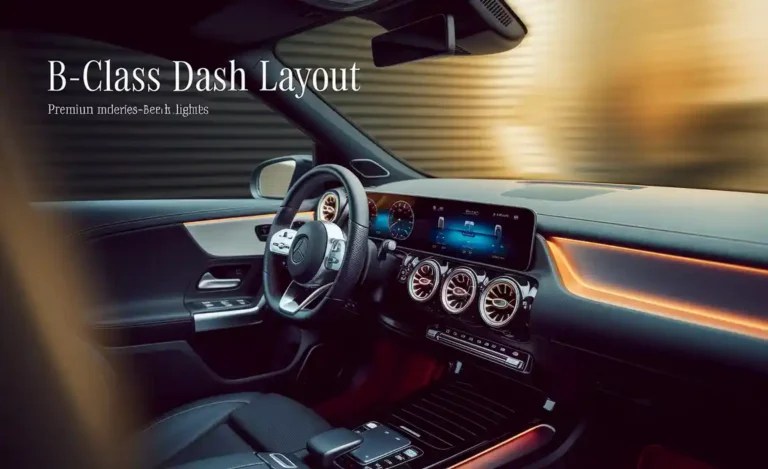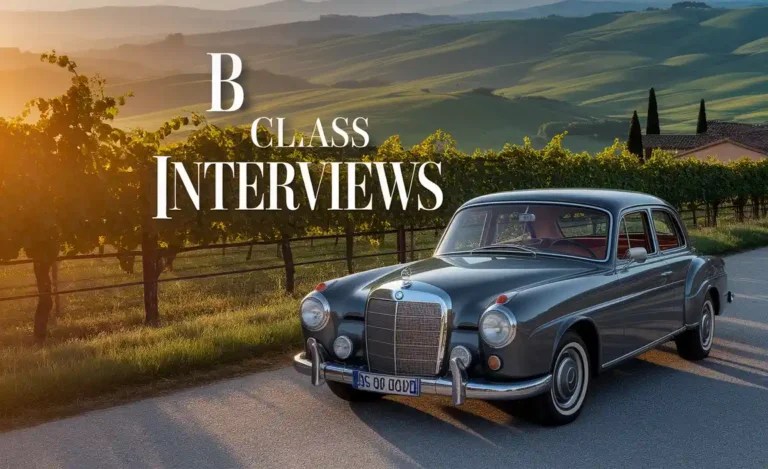B Class Exterior Colors: Stunning & Perfect Choices for Your Mercedes-Benz
Every Mercedes-Benz is a statement, and the exterior color plays a huge role in that. For the B-Class, a compact yet incredibly versatile vehicle, selecting the right paint finish is key to making it uniquely yours. But with so many beautiful options, how do you choose the “perfect” one? It’s a common question, and one that deserves a thoughtful answer. Don’t worry, we’ll guide you through the popular B-Class exterior colors, what makes them desirable, and how to pick the one that best suits your aesthetic and lifestyle.
From timeless classics to bold modern statements, the B-Class fleet has offered a dazzling spectrum of hues. We’ll break down the most sought-after shades, discuss factors like durability and how the color impacts your car’s perceived value, and help you make a decision you’ll love every time you see it.
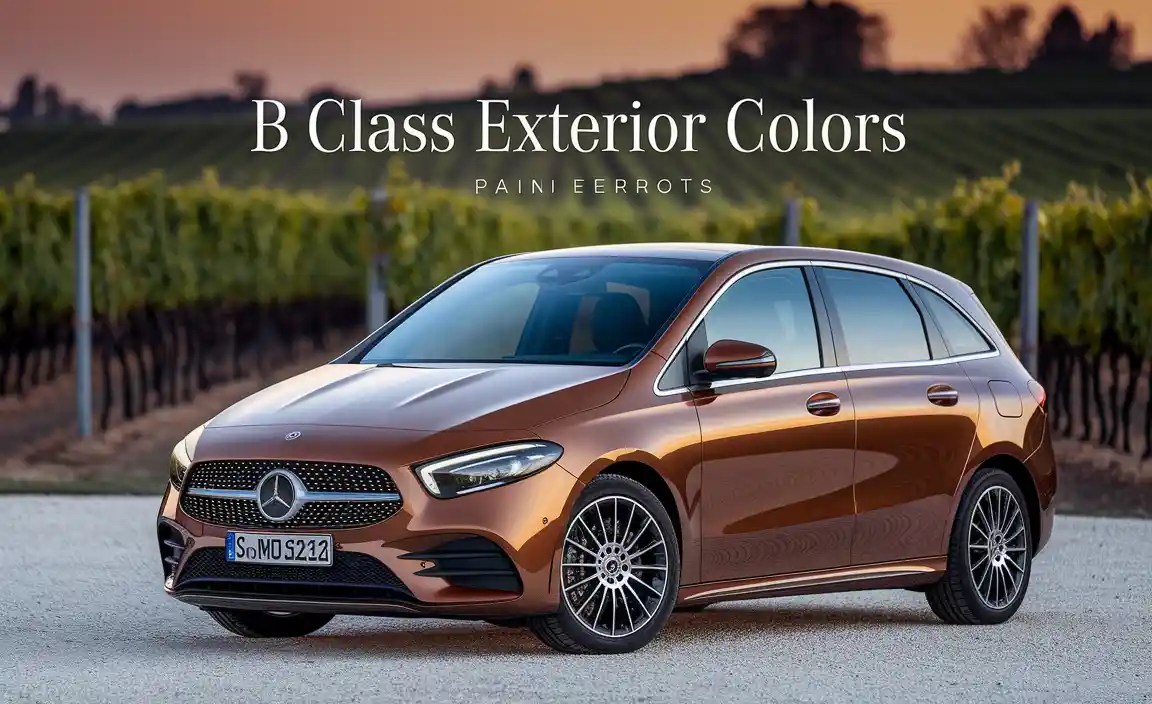
Understanding Mercedes-Benz B-Class Exterior Paint Options
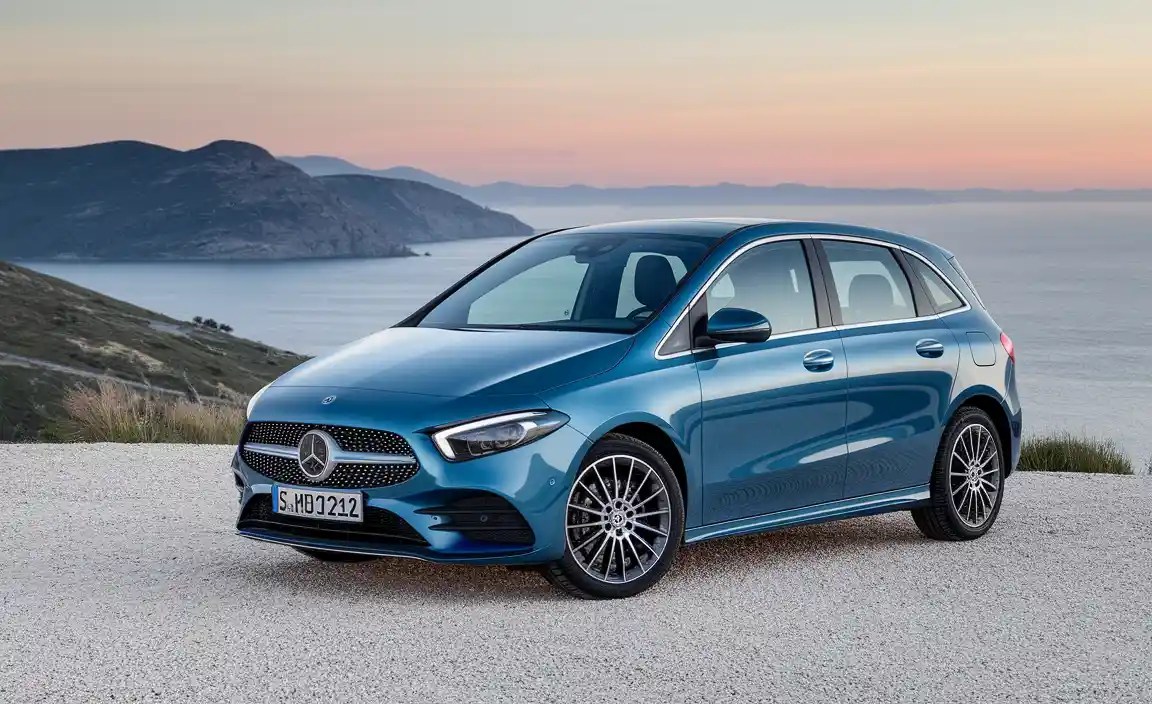
Mercedes-Benz is renowned for its sophisticated color palettes, and the B-Class is no exception. The available exterior colors can vary slightly by model year and specific trim packages, but they generally fall into a few familiar categories: classic solids, elegant metallics, and sometimes even sophisticated magno (matte) finishes. Each type of paint has its own characteristics, affecting appearance, maintenance, and even cost.
Solid Colors
Solid paints are the most straightforward. They offer a pure, unadulterated hue without metallic flakes or special effects. They tend to be more budget-friendly and can be easier to repair if minor scratches occur, as the color is consistent throughout the paint layer.
Metallic Paints
Metallic paints contain tiny aluminum particles mixed into the clear coat. These particles reflect light, giving the paint a shimmering, dynamic appearance that changes subtly with the viewing angle and light conditions. Metallics often make a car look richer and more premium, and they are extremely popular for luxury vehicles like the B-Class.
Magno (Matte) Finishes
Magno, or matte, finishes are less common but incredibly distinctive. These paints have a non-reflective surface that gives the B-Class a unique, understated, and modern aesthetic. While visually striking, matte finishes typically require specialized care to maintain their appearance and can be more challenging and expensive to repair.
Popular B-Class Exterior Colors and Their Appeal

Certain colors have consistently proven to be favorites among B-Class owners. These shades balance timeless elegance with a modern flair, fitting the B-Class’s role as a premium compact vehicle.
Classic Whites: Polar White & Cosmos Black
White is a perennial favorite for a reason. It’s clean, crisp, and makes any car look sharp. For the B-Class, shades like Polar White offer a pure, classic look that emphasizes the vehicle’s clean lines.
Cosmos Black is another iconic choice. Black exteriors exude sophistication and power. On a B-Class, black can make it appear more substantial and sporty. However, black paint is notorious for showing dirt, dust, and minor scratches more readily than lighter colors.
Elegant Grays: Mountain Grey & Iridium Silver
Grays and silvers are universally appealing for their understated luxury and practicality. Mountain Grey, often available with a metallic finish, offers a sophisticated, modern look that hides road grime relatively well. It’s a color that suits the B-Class’s refined character perfectly.
Iridium Silver is another popular metallic. Silver is excellent at maintaining a clean appearance between washes and effectively masks light dust and swirl marks. It also reflects light beautifully, giving the B-Class a dynamic and premium look.
Deep Blues: Cavansite Blue & Denim Blue
For those seeking a touch of color without being overtly bold, deep blues are an excellent choice. Shades like Cavansite Blue are a metallic, deep, almost inky blue that can appear black in low light but reveals its rich blue undertones in sunlight. It’s a sophisticated and less common alternative to black or grey.
Newer generations of the B-Class have also featured shades like Denim Blue, offering a slightly brighter but still elegant take on the color. These blues add a touch of personality while maintaining a premium feel.
Vibrant Reds: South Sea Blue (often with a red undertone) & specific Red options
While less common than neutrals, some B-Class models have offered striking red or reddish-blue options. These colors inject a dose of sportiness and individuality. A deep, rich red can highlight the B-Class’s design cues, making it look more dynamic and eye-catching. These are usually metallic finishes that offer depth and sparkle.
Special Edition & Distinctive Colors
Occasionally, Mercedes-Benz introduces special edition models or limited runs with unique color options. These might include richer greens, bolder blues, or even more adventurous hues. They offer a chance to own a B-Class with truly distinctive styling.
Factors to Consider When Choosing Your B-Class Exterior Color
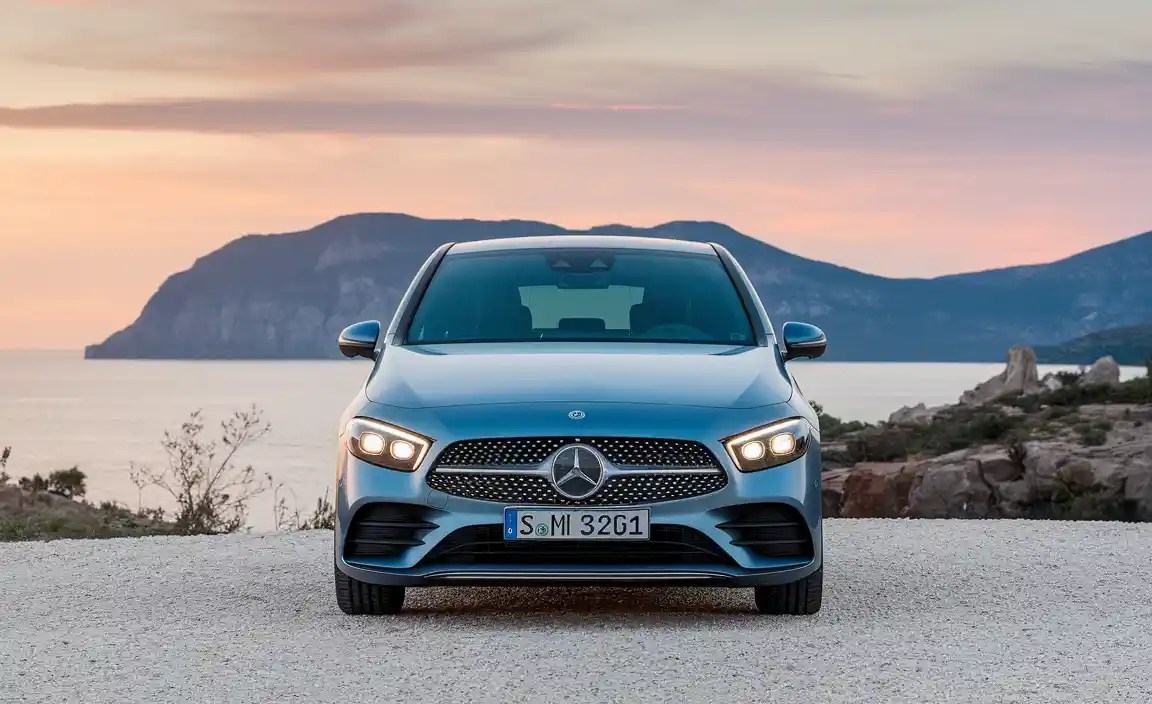
Selecting an exterior color is more than just picking your favorite shade. Several practical and aesthetic factors come into play:
- Personal Style: The most important factor is choosing a color that you love and that reflects your personality. You’ll be looking at your car every day!
- Resale Value: Lighter neutrals like white, silver, and grey are generally considered the safest bets for resale value as they appeal to the broadest range of buyers.
- Visibility and Safety: Lighter colors tend to be more visible to other drivers, especially in low light conditions.
- Maintenance: Darker colors, especially black, show dirt, dust, and water spots more easily. Lighter metallic colors often hide minor imperfections and dirt best.
- Climate: In very hot climates, lighter colors can reflect more sunlight, keeping the car’s interior slightly cooler than darker colors.
- Design Emphasis: Certain colors can highlight specific design elements of the B-Class. A sharp white or bright silver can emphasize its sporty lines, while a deep blue or grey might accentuate its sophisticated profile.
Popular B-Class Exterior Color Table
This table provides a general overview of commonly available B-Class exterior colors and their typical characteristics:
| Color Name (Example) | Type | Aesthetic Appeal | Resale Value Tendency | Maintenance Consideration |
|---|---|---|---|---|
| Polar White | Solid | Clean, classic, sharp | High | Good, shows dirt but easy to clean |
| Cosmos Black | Metallic | Sophisticated, powerful, elegant | Moderate to High | High maintenance, shows dust/scratches readily |
| Mountain Grey | Metallic | Modern, sophisticated, understated | High | Good, hides dirt well |
| Iridium Silver | Metallic | Dynamic, premium, versatile | High | Excellent, hides dust and minor imperfections |
| Cavansite Blue | Metallic | Deep, rich, elegant, unique | Moderate to High | Good, hides dirt fairly well |
| Denim Blue | Metallic | Slightly brighter, modern blue | Moderate | Good |
How to Preserve Your B-Class’s Exterior Color
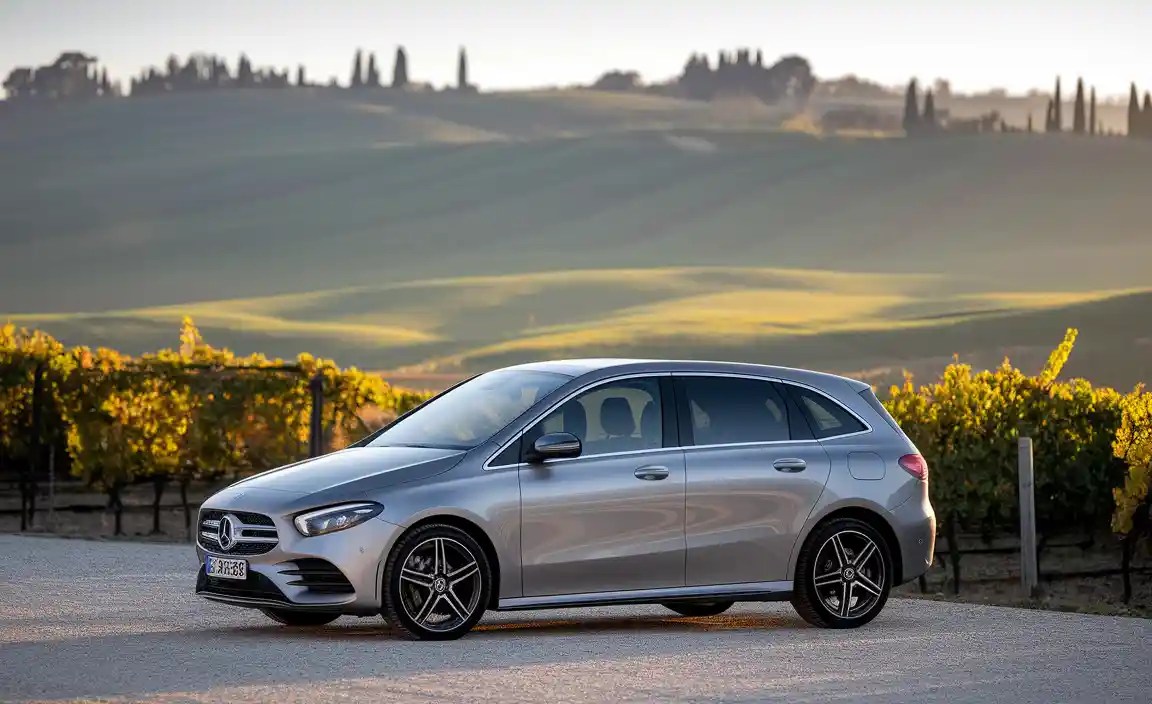
Once you’ve chosen your perfect B-Class color, keeping it looking its best is crucial. Proper care will not only maintain its stunning appearance but also protect your investment.
Regular Washing is Key
The most basic and effective way to preserve your paint is through regular washing. This removes dirt, grime, bird droppings, tree sap, and other contaminants that can etch into the paint if left for too long.
- Frequency: Aim to wash your car at least every two weeks, or more often if it gets particularly dirty or exposed to harsh elements.
- Method: Use the two-bucket method: one bucket for soapy water and another for rinsing your wash mitt. This prevents you from spreading dirt back onto the paint.
- Drying: Always dry your car with a clean, soft microfiber towel to prevent water spots and scratches.
Waxing and Protection
Washing is crucial, but adding a layer of protection takes your paint care to the next level. Wax or sealant provides a sacrificial layer that protects the clear coat from UV rays, environmental fallout, and light scratches.
- Wax: Traditional natural waxes offer a deep, warm shine. They typically last 1-3 months.
- Sealants: Synthetic sealants offer more durable protection, often lasting 4-6 months or even longer. They provide a slick, glossy finish.
- Ceramic Coatings: For the longest-lasting and most durable protection, consider a ceramic coating. Applied professionally or by experienced DIYers, these can last for years and offer superior resistance to chemicals, UV rays, and minor scratches. For more on paint protection, consult resources like Automotive Refinish Color Guide’s section on paint preparation, which highlights the importance of a pristine surface for any coating.
Dealing with Scratches and Swirls
Even with careful washing, minor scratches and swirl marks can appear over time. These are often caused by improper washing techniques or environmental factors.
- Polishing: For light scratches and swirls, a car polish can often remove them. Polishing is a mild abrasive process that smooths the paint surface. This can be done by hand for minor imperfections or with a machine polisher for more significant issues.
- Scratch Removers: For very light surface scratches that don’t go through the clear coat, specific scratch remover products can be effective.
- Professional Help: For deeper scratches or damage, consult a professional detailer or body shop.
Understanding Paint Codes
If you ever need to order touch-up paint, know your car’s paint code is essential. Mercedes-Benz uses a specific system for identifying its paint colors. This code is usually found on a sticker located in the driver’s side door jamb, under the hood, or in the owner’s manual. For example, a common paint code for Polar White is “149.” Knowing this code ensures you get an exact match if you need to repair minor chips or scratches.
FAQ: Your B-Class Exterior Color Questions Answered
Q1: What is the most popular B-Class exterior color?
While popularity can shift, classic neutral colors like white (e.g., Polar White), silver (e.g., Iridium Silver), and grey (e.g., Mountain Grey) are consistently among the most popular choices for the Mercedes-Benz B-Class. They offer a timeless aesthetic and broad appeal.
Q2: Are metallic paints more durable than solid paints?
In terms of the paint’s integrity, metallic and solid paints are generally similar in durability. However, the clear coat applied over metallic paints provides an added layer of protection. The primary difference is aesthetic, with metallics offering a shimmering effect.
Q3: How do I know if my B-Class has a metallic paint finish?
Look closely at the paint in sunlight. Metallic paints will have small, visible flecks or sparkles (the aluminum particles) that shimmer and change appearance depending on the light. Solid paints have a uniform, flat color without these reflective particles.
Q4: What is the difference between Mercedes-Benz Magno and standard paint?
Magno refers to a matte finish. Unlike standard gloss paints, Magno finishes have a non-reflective, flat appearance. They are less common, offer a unique modern look, but typically require specialized cleaning and maintenance and are more expensive to repair.
Q5: Will the exterior color affect my B-Class’s resale value?
Yes, certain colors tend to hold their value better. Neutral colors like white, silver, and grey are generally more sought after by a wider range of buyers, potentially leading to a higher resale value compared to very bold or niche colors.
Q6: What should I do if I get a scratch on my B-Class’s paint?
For minor surface scratches that haven’t penetrated the clear coat, you can try a polishing compound or a dedicated scratch remover. For deeper scratches, it’s best to consult a professional detailer or body shop to ensure a perfect repair that matches the original factory finish.
Q7: How often should I wash and wax my B-Class?
You should wash your B-Class at least every two weeks, or more often if exposed to dirt, salt, or bird droppings. A good coat of wax or sealant should be applied every 3-6 months, or as recommended by the product manufacturer, to maintain its shine and protection.
Conclusion
Choosing the exterior color for your Mercedes-Benz B-Class is a personal journey, but one where understanding your options and considering practical factors can lead to a truly perfect outcome. From the timeless elegance of Polar White and Cosmos Black to the modern sophistication of Mountain Grey and the rich depth of Cavansite Blue, your B-Class has a color that can perfectly express your style and enhance its inherent luxury.
Remember that the color is not just about aesthetics; it also plays a role in how visible, how clean your car appears, and its potential resale value. By combining your personal preference with an awareness of these elements, you can select a hue that you’ll admire for years to come. And with diligent care through regular washing, waxing, and prompt attention to any imperfections, you can ensure your B-Class maintains its stunning exterior finish, making every drive a statement of refined taste and automotive excellence.



